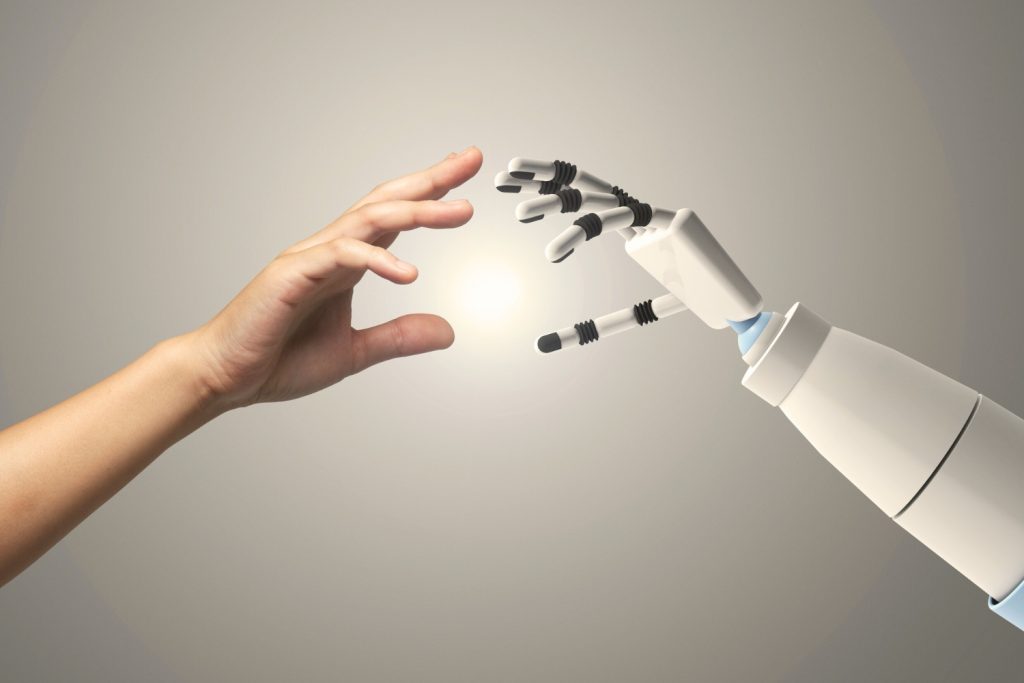Artificial intelligence (AI) is a constant topic in our office. We, as digital marketers, are fascinated by its ability to create. While this is the case, we also understand the importance of human creativity in the content creation process (and we’re not just saying this because we’re humans). At the end of the day, marketing still needs to be guided by human hands. Here’s where the magic of balancing human creativity and AI comes in.
Yes, AI is a powerful tool that can be used for automation, data, speed, and probably more soon, but it’s not able to connect companies, brands, and sites to real people. We’ll explore this a little more in-depth by identifying the three main elements that can put together the best marketing campaign with AI and human collaboration.
Three Human Elements AI Can’t Replace
Let’s establish the three pillars of why marketing needs to be a collaborative effort between humans and AI. These pillars include representation, personalization, and strategy.
Representation
Creativity in marketing isn’t just about pretty visuals or catchy slogans. It’s the ability to tell a story that moves someone, build trust with a message, and turn a scroll into a click or even a lifelong customer. Today’s marketing isn’t just strategic, it’s emotional.
Think about it like this: In movies, where the main character experiences something tragic or depressing, the writer, director, producer, and actor all play a role in portraying that story in a creative way to make it resonate with the audience. Only a human can uniquely communicate that exact feeling to capture the emotion and representation of a moment, emotion, or story.
Human imagination and its relation to representation
We create from our vast pool of experience, knowledge, emotions, and cultural influences. This is what gives us the ability to represent groups of people. AI, on the other hand, can only remix what we give it. You can let AI do the grunt work and humans do the creative work, but it’s not a one-path road. For example, you can feed AI your creative work and then change the results that come out. When we prompt AI with an idea, then take its results based on emotional insight or lived experiences, that’s where the collaboration happens. It’s a lot of back and forth, but you always want to humanize your content and make it unique.
In summary, creativity yearns for representation. People care about being represented. Families, young and old generations, technology experts, all of these groups of people have their cultural nuances that need to be added by a human mind and heart. Creative thinkers decide what matters to an audience and build a marketing campaign that people actually care about and relate to.
Personalization
Sure, AI can personalize emails by name and shopping behavior. But it doesn’t know your audience like you do.
It can’t sense when your customers are burnt out or when they’re craving something new. It doesn’t build a high-quality web design that leads the customer right where they want to go. That’s where your human experience comes in. You read between the lines, find a target you want to hit, and tailor your content to what your customers want (not just what they clicked on last week).
Ask yourself: How can I use AI’s suggestions, but shape them into something that truly speaks to my customer?

Strategy
AI can recommend a marketing strategy. It knows what’s trending, what time to post, the popular keywords, and plenty of other data. But marketing is full of unpredictability. Like most things, the answer in marketing is: it depends. There are so many things that could happen, like overnight virality, a failed headline, external factors like the social or political economy – AI can forecast, but it can’t be certain, and neither can we.
But that’s why we’re flexible. AI can give you a structure, sure, but only a human can steer that ship with confidence and adaptability. As a human, you’re responsible for reading the room and getting into the nitty gritty of making judgments when things change.
To summarize, marketing is dynamic. An AI representation, personalization, or strategy might work for one thing, but if you drown another project in the same exact flavor, it can become ineffective.
Finding the Right Balance
Balancing human creativity and AI in marketing isn’t about choosing one over the other. It’s about leveraging each of their strengths and using that to your advantage.
You can let AI build your foundation: sorting, collecting, and analyzing data, automating repetitive tasks, testing, correcting – things of this nature. And let humans bring the meaning, creativity, storytelling, and strategy.
We shouldn’t resist AI just because it can’t create original experiences. We should use it as the assistive tool that it’s meant to be and trust your gut to deliver the correct product, service, and most of all, message to your audience.

Real-World Examples of Collaboration
L’Oréal
L’Oréal uses AI for virtual try-ons and custom skincare analysis. But behind every experience is a creative brand team crafting the user interface, tone, and aesthetic. The AI tells you what shade might suit you, but the brand storytelling makes you feel beautiful wearing it.
Netflix
Netflix uses AI to suggest what to watch next, but their marketing campaigns are deeply human. Think of the clever Twitter banter, viral memes, or emotional trailers that come from real creative teams who understand culture and audience moods. AI delivers content, but people shape the narrative around it.
Airbnb
Airbnb uses AI to recommend listings and personalize search results based on user behavior. But their marketing thrives on emotion. Heartwarming guest stories, host highlights, and social content that taps into the idea of “belonging anywhere.” Their Made Possible by Hosts campaign, for example, featured real guest photos and stories, edited into stunning video content, showing that while data might lead users to a listing, it’s human storytelling that builds trust.
What To Expect in the Future
So while AI will continue to evolve, the brands that thrive will be the ones that remember: technology can deliver your message, but only a human can make it matter. In 2025 and beyond, the world of marketing will continue to evolve. We’ll likely see more advanced AI tools entering our workflows. But the brands that stand out will be the ones that don’t lose their voice in the noise.
You’ll still need humans who understand people – what they care about, what they laugh at, what they cry over, and what makes them take action. Balancing human creativity and AI won’t be a trend. It’s already the new standard.


